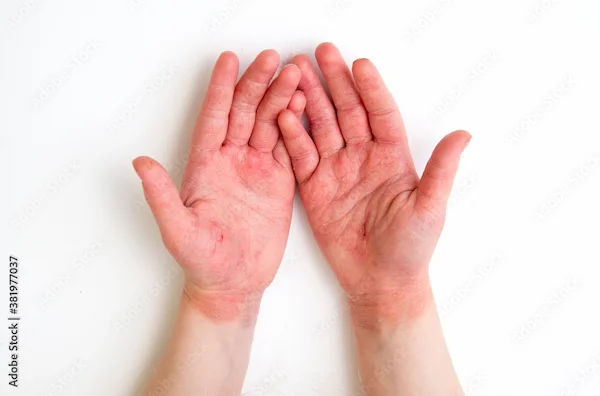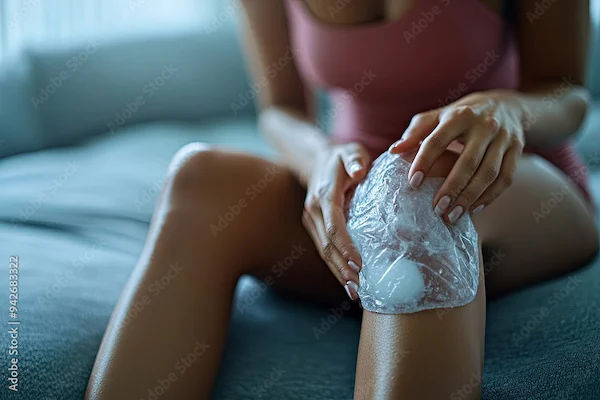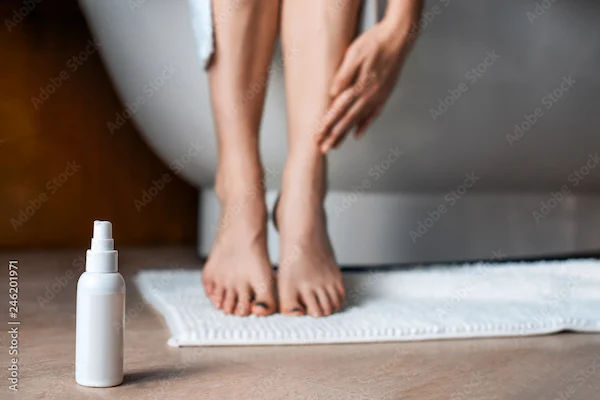How to Reduce Swelling From Injury?
Learn how to reduce swelling from injury with effective treatments like R.I.C.E., medications, home remedies, and long-term prevention tips for faster healing.

Written by
Last updated on 3rd Jul, 2025
Swelling, clinically known as oedema, is a common reaction of the body to any injury. It’s also an aspect of the healing process, as fluids and immune cells gather at the injury spot to help with tissue healing. This accumulation can lead to noticeable swelling or swelling of the affected region.
Although swelling is a required repair component, appropriate control can minimise pain, expedite healing, and limit the probability of complications.
Common Causes of Swelling From Injury
Swelling may accompany a few different categories of injuries, each of which has unique properties and treatment directions.
Sprains and strains: Sprains are injuries to ligaments, while strains are injuries to muscles or tendons. Both can be swollen due to tissue damage or inflammation.
Contusions and fractures: Contusions, or bruises, occur when small blood vessels break beneath the skin, leading to swelling and discolouration. Fractures, or breaks in the bone, often produce large amounts of swelling due to widespread tissue damage and bleeding. In addition to rest, ice, compression, and elevation, a few other home remedies can effectively reduce swelling.
Immediate Treatment Options for Injury Swelling
Immediately managing injury swelling is essential for minimising pain and preventing complications.
The R.I.C.E. method is an effective first-aid treatment for injuries:
Rest: Do not engage in activities that make the injury worse. If necessary, use crutches or a sling.
Ice: Apply ice packs for 15–20 minutes several times daily. This creates a barrier to protect the skin from damage.
Compression: Towards compression, apply a compression bandage. Get it tight but not too tight. Look for warning signs of compromised circulation.
Elevation: Raise the injured area above the level of the heart. This technique is best when used in conjunction with other R.I.C.E. components.
You can take over-the-counter NSAIDs (ibuprofen, naproxen) to help decrease swelling and pain by inhibiting inflammatory molecules. Follow the dosage recommendations. Speak to a doctor if you have health issues or are on other medications. There are potential side effects with long-term use.
Home Remedies for Swelling Reduction
In addition to R.I.C.E. and medications, home remedies can help. Ice and heat are useful, depending on the phase of the injury.
Ice: Ideal in the first 24-72 hrs for inflammation and pain. Set aside 15-20 minutes for each application.
Heat: In the first 72 hours, heat is generally avoided as it can increase swelling. After that, heat can increase blood circulation and relax muscles.
Appropriate hydration supports circulation and lymphatic function to carry out excess fluid. Try to drink eight cups of water a day. If you are physically active, consider electrolyte-rich drinks.
Importance of Rest and Elevation
Reducing the swelling is a huge part of helping you recover quicker from an injury. Two key components of this are rest and elevation.
Advantages of Reducing Exercise
Limiting physical activity after an injury helps prevent complications and supports faster recovery.
Reduces Further Injury: Staying still minimises stress on the injury site, allowing the injury to remain localised and avoiding further injury.
Controls Swelling: The least motion means that considerably less blood flows to the area, and fluids from the blood vessel fall on the surrounding tissues, causing swelling.
Elongates Healing Time: Sleep enables the body to work on the repair and recovery of tissues.
Decreases Pain: Keeping the wound immobilised reduces pain and swelling.
How to Properly Elevate the Affected Area
Proper elevation helps control swelling by improving circulation and reducing fluid buildup.
Keep Above Heart level: Elevate the area to help with drainage and swelling.
Use Pillows or Supports: Place pillows beneath the limb when necessary to ensure limb stability.
Elevate Periodically: Keep the area elevated for 15–20 minutes several times daily.
Assist with Cold Therapy: Ice packs reduce swelling and combine well with elevation.
When to Call the Doctor
Most swelling can be treated at home, but some require medical attention. Some signs would be -
Arthritis pain that isn’t relieved with over-the-counter medications.
Swelling that is severe and doesn’t get better within a few days.
Loss of feeling, numbness or tingling
Requires support to bear weight or move.
Signs of infection (fever, chills, increasing redness, and pus).
Suspected fracture or dislocation.
Severity petrifies, and physical intervention is needed for broken bones, dissembled joints, internal bleeding, or major infections. A healthcare professional can help diagnose what’s wrong, rule out serious issues, prescribe treatment, and monitor progress. Early intervention can also help avert long-term difficulties.
Long-term Swelling Management
Long-term treatment to encourage healing and prevent recurrence may be necessary for chronic swelling.
Physical Therapy and Exercises: Physical therapy may help improve the range of motion, strengthen muscles, and reduce swelling. Certain exercises, like tendon glides for hand injuries, can help with nutrition and minimise stiffness.
Diet and Supplements to Reduce Inflammation: A well-balanced diet that includes anti-inflammatory food, such as fruits, vegetables and omega-3 fatty acids, can assist in healing. Some supplements, such as magnesium, may help to relieve swelling as well but talk to the doctor before introducing any new ones. Lastly, you want to think about what you can do to avoid getting hurt again.
Preventing Swelling from Recurrent Injuries
Avoiding recurrent swelling and achieving long-term health relies on preventing future injuries.
Techniques for proper injury prevention include
Warm up before exercising
Avoid maintaining improper form and technique during exercise or sports
Avoid overtraining
Maintain a healthy weight
Wear appropriate footwear
Sports or other active pursuits can be made safer with protective gear, such as braces or padding. Good posture can help alleviate the risk of sprains and strains. If you are in injury rUse of Compression Aids recovery, you may as well have a holiday and practice some healthy habits.
Use of Compression Aids
Compression garments are tight-fitting clothing designed to compress certain body areas, increasing blood flow and providing support. They have transformed from simple wraps to high-tech medical and sports clothing and can also help athletes, pregnant women, and active lifestyle practitioners.
Types of Compression Garments and Their Benefits
Compression garments come in various forms, each designed to provide targeted support and enhance circulation.
Compression Socks: Help blood flow to your legs and decrease the chance of blood clots or swelling. They also relieve symptoms of conditions such as deep vein thrombosis (DVT) and varicose veins.
Compression Sleeves: These sleeves are mainly for arms or calves. They provide targeted compression and help alleviate muscle fatigue and discomfort while exercising.
Compression Tights and Leggings: Improve muscle stabilisation, decrease muscle soreness, and potentially increase proprioceptive awareness of the joint. They’re common to athletes in running, CrossFit and yoga.
Compression Shirts: Help improve posture and stability and may reduce muscle oscillation as the body moves. They are also the best training shoes for weightlifting and team sports.
Guidelines for Safe and Effective Use
Compression garments are designed to apply pressure to the body's surface, encouraging the transportation of oxygenated blood back to the muscles. This augmented circulation boosts performance and removes metabolites, alleviating fatigue during exercise and allowing quicker recovery after a workout.
Compression wear can also reduce muscle oscillation, improve power and endurance, and help reduce soreness and fatigue post-exercise. Compression garments prevent or delay the onset of muscle soreness.
Conclusion
These strategies include immediate and at-home care and long-term management of your injury. Understanding the causes of swelling, using the R.I.C.E. method, and preventing injuries are significant aspects of overcoming swelling, thus healing and preventing recurring injuries.
Consult Top General Physicians
Consult Top General Physicians

Dr. Mohamed Azeem
General Physician/ Internal Medicine Specialist
2 Years • MBBS,MD(Internal Medicine) CCEBDM
Karaikudi
Apollo Hospitals Karaikudi, Karaikudi

Dr. Amitava Ray
General Physician/ Internal Medicine Specialist
20 Years • MBBS, DNB (Family Med.), PGDHHM, FRSTM&H. Certificate in Geriatric medicine & Diabetes Management.
Kolkata
Apollo Multispeciality Hospitals , Kolkata, Kolkata
(600+ Patients)

Dr. Rajib Ghose
General Practitioner
25 Years • MBBS
East Midnapore
VIVEKANANDA SEBA SADAN, East Midnapore

Dr. Rajib Ghose
General Physician/ Internal Medicine Specialist
26 Years • MBBS
Kolkata
B Ghose Foundation Doctor's Chamber, Kolkata
(25+ Patients)

Dr. Ashita Kuruvilla
General Practitioner
6 Years • MBBS
Kolkata
KVC CLINIC, Kolkata



